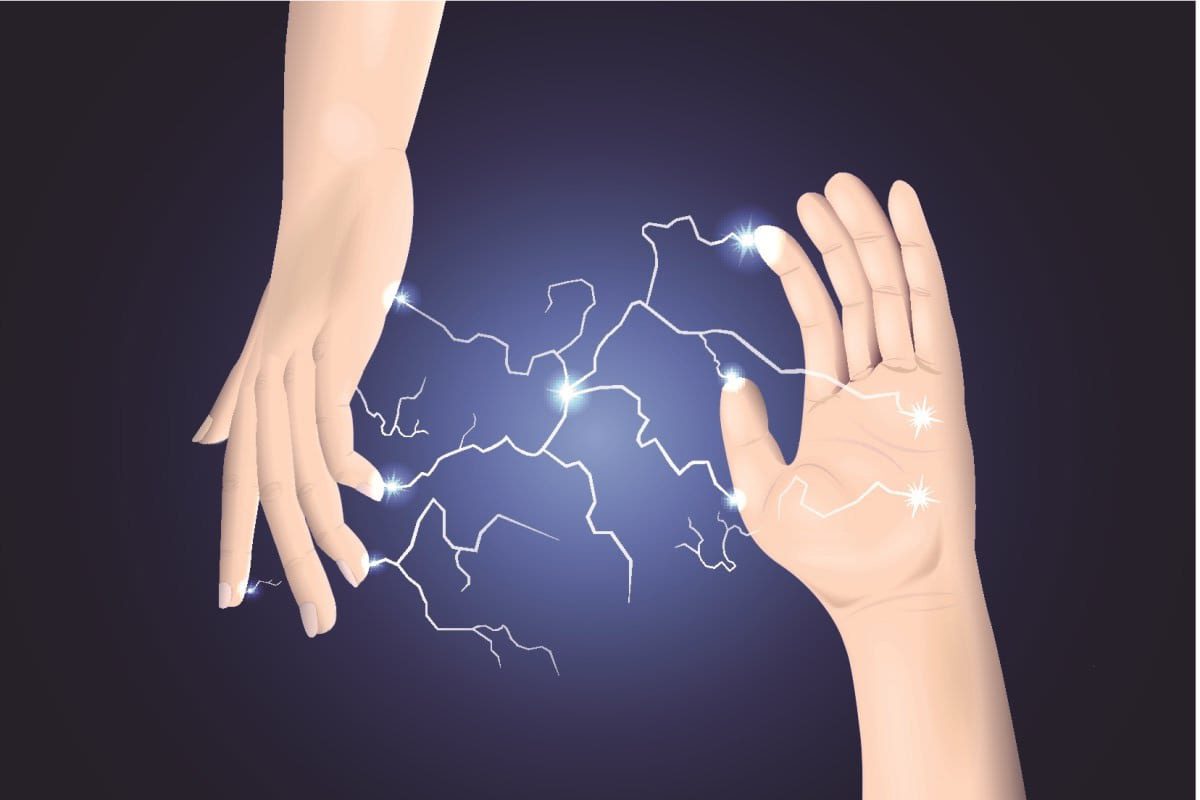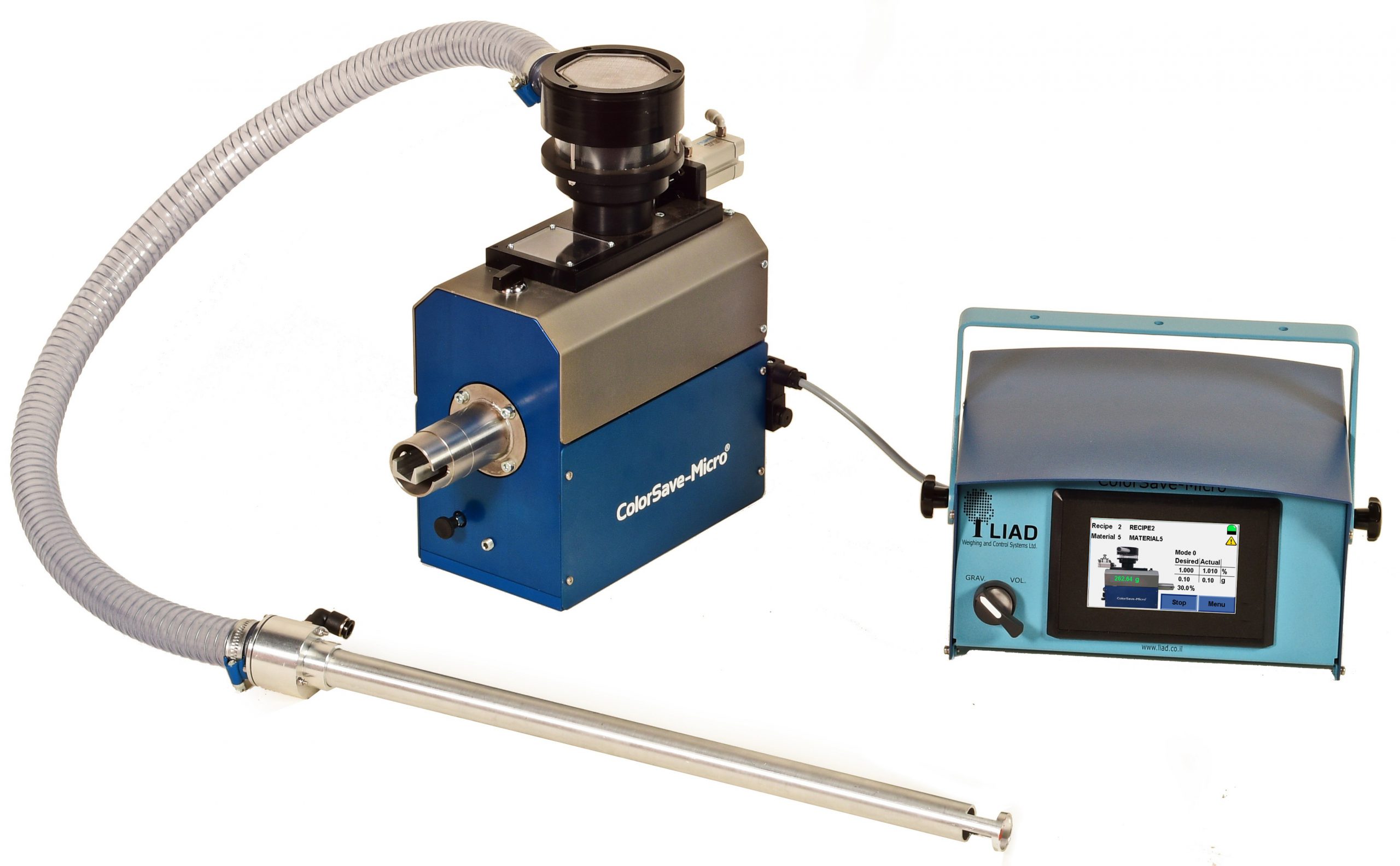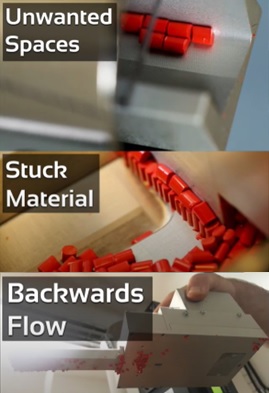
Static electricity can cause problems in the plastics industry when handling raw materials, as it can lead to uneven flow and difficulty in dosing. This can be particularly challenging when working with low throughput, such as in micro-feeding. We have developed a solution for this problem in our gravimetric micro-feeder, ColorSave-Micro.
Electrostatic charge is created when there is a transfer of electrons between two bodies. This can happen when they come into contact and then separate, such as when plastic granules are being dosed or conveyed. Factors such as humidity, temperature, and the materials themselves can also affect the amount of electrostatic charge created. Additionally, some materials, such as plastics, are naturally more susceptible to creating static charge than others.
As mentioned earlier, electrostatic charge is created when there is a transfer of electrons between two materials, and friction is a major factor in this process. The faster the speed of the friction, the higher the accumulated electrostatic charge (voltage) on the raw material. This can result in charges of thousands or tens of thousands of volts, making it difficult to handle and dose the material accurately. Additionally, the raw material in the plastics industry acts as an insulator, meaning it cannot lose its static electricity by grounding, and can remain charged for hours. This further the problem of static charge in handling and dosing the material.
The problem of static electricity in raw materials can greatly affect the accuracy and efficiency of feeding in the plastics industry. Charged additives tend to clump, leading to uneven feeding and potential clogs in the feeder. This can be especially challenging in a gravimetric feeder, as the control system may have difficulty adjusting to the clumped feeding and the static electricity may disrupt the weighing process.
Gravimetric micro-feeding, which involves very low throughput, can be even more difficult when dealing with charged materials. In most cases, the additives do not become charged to the extent that would cause malfunctions in gravimetric dosing systems. However, there are instances where static electricity is a problem, and it is important to address them effectively.

Photo 1: ColorSave-Micro – World’s first feeder for micro dosing
The ColorSave-Micro is a specialized gravimetric feeder developed by LIAD for use in the plastics industry. It is designed to handle low throughput, making it ideal for feeding small amounts of additive materials in various production processes, for example. The feeder uses a special dispenser and vibration mechanism to ensure uniform and accurate feeding at rates as low as 50 g/hour. This feeder is specially designed for handling the static electricity issue in raw materials and ensure the uniform feeding.
We tested our ColorSave-Micro feeder on a highly charged additive and found that while it was able to handle the material, there were still some undesirable effects. The granules flowed unevenly in clumps with spaces between them, and some of the granules moved backward instead of forward. At times granules jumped randomly in the feeder and some of them got stuck at the outlet of the feeder and didn’t fall into the production machine. Despite these challenges, the feeder was able to produce a satisfactory product, but with occasional minor vibrations that posed difficulties for the control system. Overall, The ColorSave-Micro feeder can handle the static electricity issue but not entirely eliminate it.
 Photo 2: Common issues encountered in feeding charged plastic materials
Photo 2: Common issues encountered in feeding charged plastic materials
An air ionizer is a common method for discharging static electricity in raw materials. It works by using high voltage to ionize air molecules, creating a balanced source of negative and positive ions that attract the opposite charge of the raw material and discharge its static electricity. To ensure a steady and consistent flow of ionized air, the air ionizer is connected to the factory’s air system and receives low-pressure air, which is then released at the same throughput, but now ionized. This method can effectively discharge the static electricity in raw materials and prevent it from causing any issues in the feeding process.
When using an air ionizer to discharge static electricity in raw materials, it is important to determine the optimal location to use the ionized air in order to effectively discharge the material. In the case of the ColorSave-Micro feeder, it is best to discharge the static electricity inside the feeder itself to ensure that the material flows freely from the feeder to the production machine.
After testing various locations, it was determined to install the air ionizer at the back of the feeder. The ionized air outlet was installed on the dispenser so it would be able to blow the air on the granules, as close as possible to the feeder’s outlet. This ensures that the granules have a minimal amount of time in the feeder before exiting, reducing the chance of re-accumulation of static electricity. The air ionizer can discharge the granules effectively while not disrupting the accuracy of the gravimetric measurement.
The addition of an air ionizer in the ColorSave-Micro gravimetric feeder resulted in a smooth flow of the additive. Prior to the use of the air ionizer, granules would stick to the sides of the receiver, but with the ionizer, all of the material flowed freely into the feeder hopper. Inside the feeder, the granules also flowed seamlessly and without interruption, reaching the production machine without any issues. The use of the air ionizer eliminated all static electricity problems and greatly improved the overall feeding quality.
Converse diretamente com nossos especialistas e descubra maneiras de economizar custos, estoque e tempo.
Solicitar Demonstração